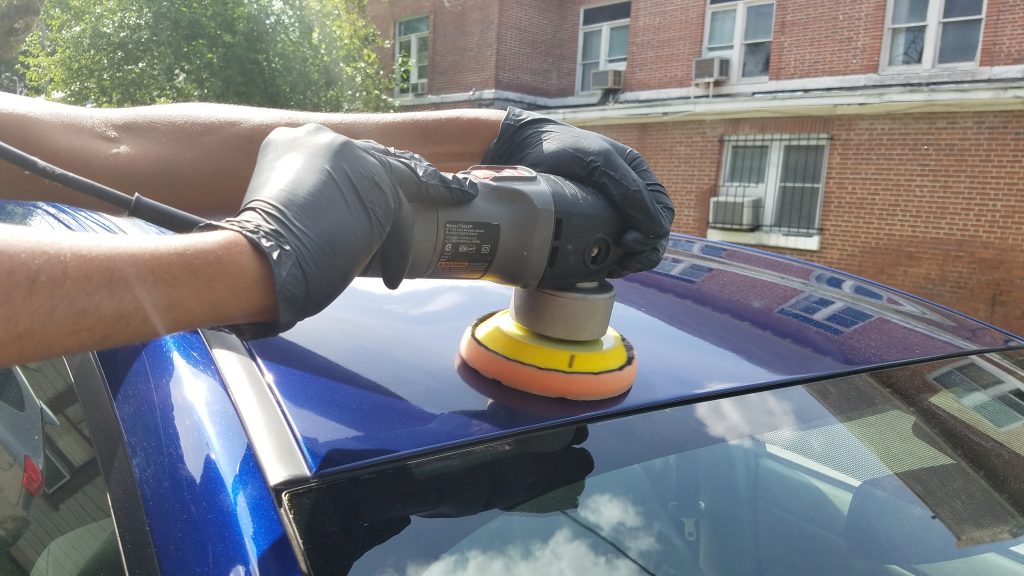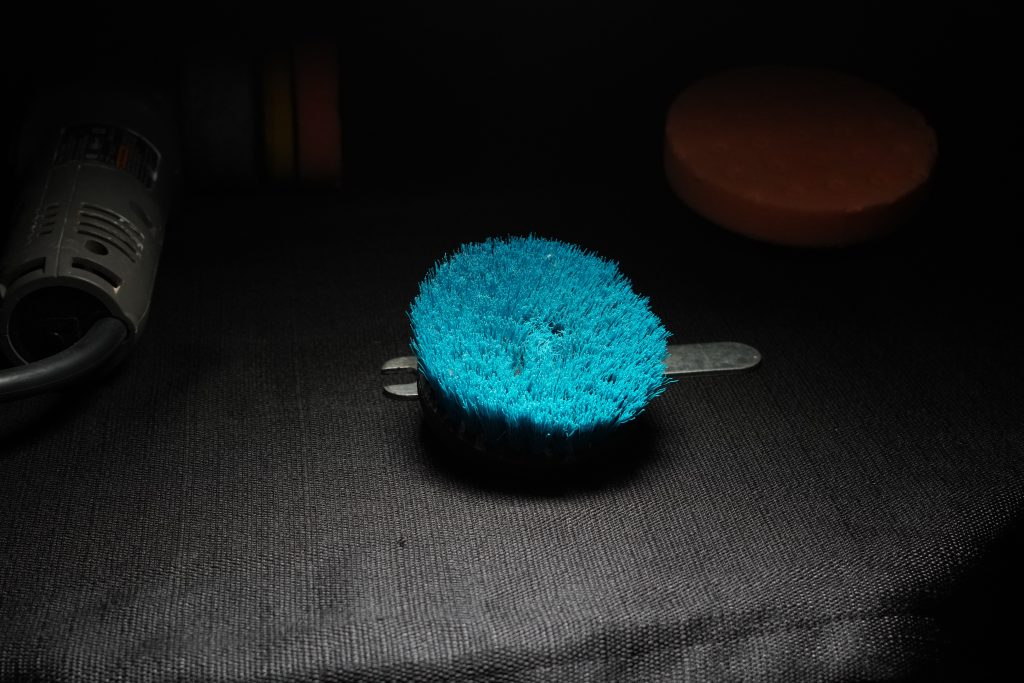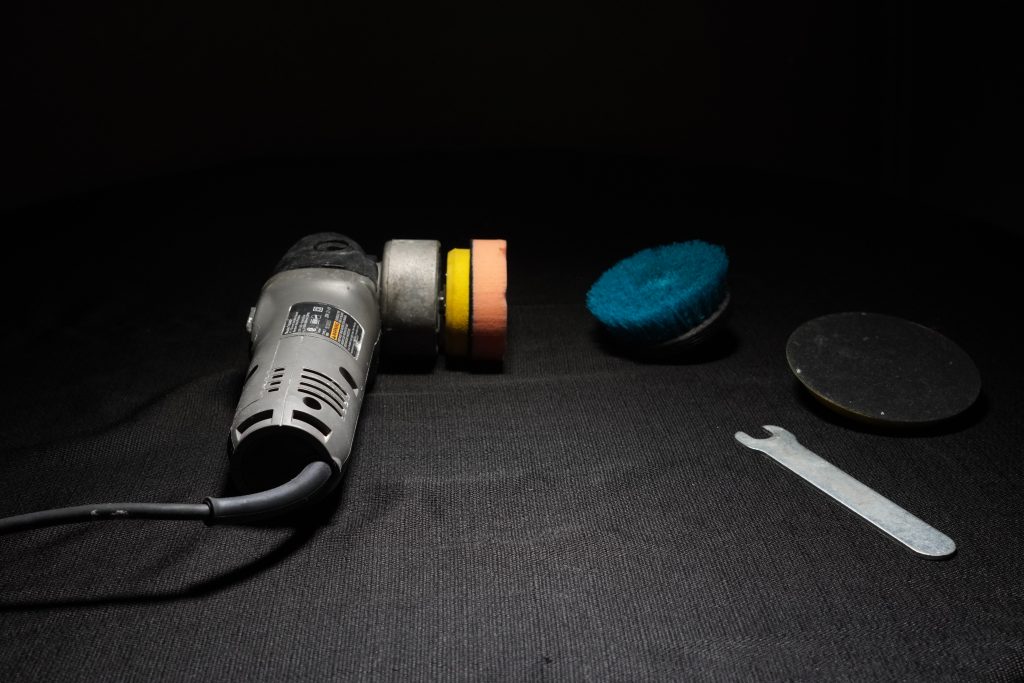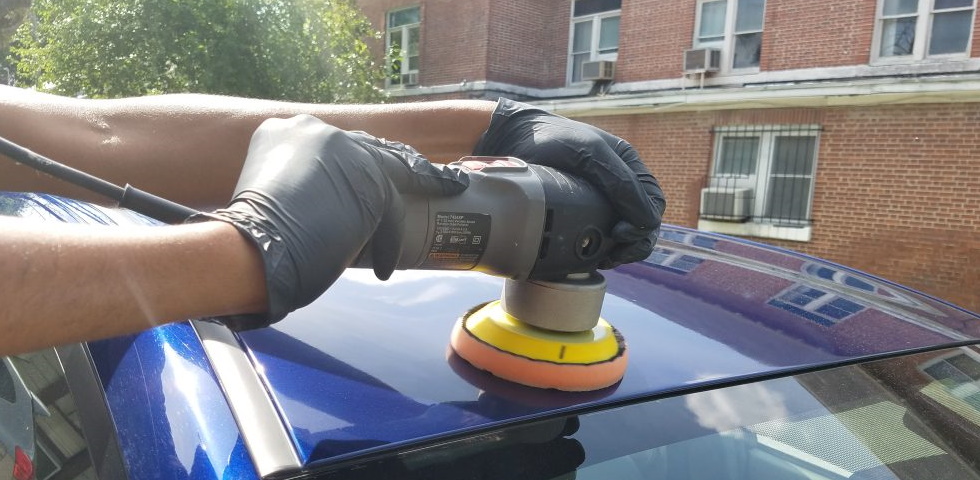The Porter Cable 7424 XP Random Orbital Buffer is often my recommendation for those who are new to polishing as their first polisher. The two practical benefits of the Porter Cable as a first polisher are the price and the multiple backing plate options. This makes the Porter Cable an excellent value option.
With the use of the included wrench you can change the backing plate and turn the Porter Cable 7424XP into a 3-, 4-, 5-, or 6-inch unit quickly and easily.
I would not recommend the 6-inch plate and pad combination for anything but (maybe) a light cleaner polish application. The Porter Cable tends to not rotate very well, in many situations, working with those larger dimensions.
Below I am using a medium aggressive pad (Lake Country CCS Orange) with various Menzerna polishes for a 2 and 3 step (paint correction) polishing with a 5-inch backing plate.

Starting out the most practical backing plates I have used for polishing, and what I recommend, are the 3-inch and the 5-inch options.
Having these options in one polisher at the current price of $124.99, takes pressure off the casual or serious car enthusiast to upgrade in the short run (and long term). It also gives you more flexibility with respect to future purchases. For serious enthusiasts and budding professionals, the Porter Cable can complement your gradual addition of polishers. My second polisher that I added to my collection was the Rupes Duetto. Many people make the Rupes 15 or even the Rupes 21 polisher their next purchase, using the Porter Cable temporarily in place of the Rupes Mini.

In addition to the available backing plate options, you can also attach a carpet brush to the Porter Cable. I usually do not use the brush attachment for the Porter Cable, but this is also an available option.
Pictured below to the left: Porter Cable 7424XP with a 3-inch polishing set up.

Detailed Image sells carpet brushes at 3 levels of aggressiveness for carpets and fabric seats (light duty, medium duty, and heavy duty). I have only used medium duty strength brushes for carpets and fabric at a max speed of 5 to protect against damaging the stitching of fabric.
For your pad setup, I recommend testing out some pad options, sizes, etc. before you make a significant investment. Below are a few questions I recommend asking yourself:
A.) Are you content with this set up?
B.) Are you considering (or believe) in the future you will upgrade your polisher selection to a long throw, i.e. Rupes random orbital or Griots (G15, G21) polisher?
If option A, the polish and pad combination I started with would be a good budget option. Those are the Lake Country CCS pads.
If option B, I would invest in the Lake Country SDO pads as these withstand the long throw polishers like the Rupes units, meaning you can easily use the pads you invested in if/when you upgrade polishers.
After you choose your polisher, do not forget to check out some of the great polishing tutorials here on the blog. One of my favorites is this article by Ivan Rajic.
Related Posts
- Polishing Products Part 1 – My Experience With The Rupes Polishers And Others
- Beginner Paint Correction Kit: Getting Started on a Budget
- Window Etching & Stain Removal | Getting the Most Out of Your Meguiar’s Cutting Discs
- Audi R8 Spyder Detail and Modesta Coating
- Ferrari 348 Detail for Cavallino Classics
